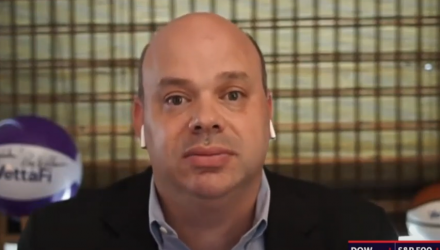Net inflows to U.S. listed ETFs of just over $200 billion in the first half of 2023 is modest compared to the pace achieved in recent years. However, once again fixed income ETFs are punching above their weight in the U.S. and globally. Despite representing 19% of U.S. industry assets, fixed income ETFs gathered 49% of the new money in the first six months. This is an impressive feat given the uncertainty in the economy and in the bond market.
See related: The Year of Fixed Income
The Vanguard S&P 500 ETF (VOO) led all ETF flows to start the year according to VettaFi LOGICLY. Advisors using this core equity ETF to support asset allocation should be pleased by its 17% gain. However, inflows were also very strong for the iShares Core US Aggregate Bond ETF (AGG) and the Vanguard Total Bond Market ETF (BND). These ETFs were each up 2.3% in the first half. While this is modest compared to VOO, the core bond ETFs were down more than 10% in 2022.
Advisors Rewarded for Taking on Rate Risk
Despite aggressive Fed rate hikes, long-duration bond ETFs have performed relatively well. The iShares 20+ Year Treasury Bond ETF (TLT) was up 4.7%. TLT alone gathered $11 billion, second only to VOO. The yield on 10-year Treasuries peaked in early March. While yields have recovered from April lows, at the mid-year mark they were largely unchanged from the start of the year.
At 16 years old, BND is the youngest of the trio of the uber-popular fixed income ETFs listed above. However, there are many compelling fixed income ETFs that have come to market in the last few years.
Active ETFs in Demand and the Supply is Growing
Actively managed fixed income ETFs gathered approximately $8 billion of new money in the first six months and we think there’s lots of room for growth. PIMCO was an early pioneer with the PIMCO Active Bond ETF (BOND). However, many other firms now offer active core bond ETFs that can be an alternative to AGG and BND.
For example, in 2021, American Century rolled out the American Century Multisector Income ETF (MUSI). In 2022, Capital Group launched the Capital Group Core Plus Income ETF (CGCP). Meanwhile, last year, the DoubleLine Opportunistic Bond ETF (DBND) began trading. This year, the BlackRock Flexible Income ETF (BINC) came to market, adding an active offering from the industry leader in fixed income ETFs.
Why Should Advisors Consider Active Fixed Income ETFs
The appeal of active fixed income ETF includes having professional managers determine what the Fed’s next moves will be. Then determining what segments of the bond market provide the best income generation opportunities given the risks.
In the three-year period ended 2022, 48% of actively managed investment-grade mutual funds outperformed the Bloomberg US Aggregate Bond Index. In contrast, just 26% of all active large-cap mutual funds outperformed the S&P 500 Index in the same period. While this data focuses on mutual funds and not active ETFs, many active fixed income ETFs do not yet have a three-year track record.
Active Management Available for Narrower Fixed Income ETFs
Many active ETFs like intermediate-term focused BOND and short-term ones like the JPMorgan Ultra-Short Income ETF (JPST) provide broad exposure, with management having discretion to overweight some segments less prominent in an index. Active ETFs are also available for bond sectors like high yield corporates and collateralized loans obligations (CLOs). Some advisors might want to complement their stake in AGG. In 2021, the Harbor Scientific Alpha High Yield ETF (SIHY) launched. Meanwhile, in January 2023, the Panagram BBB-B CLO ETF (CLOZ) began trading. These are just a handful of examples.
The Fed Paused Rate Hikes, But What’s Next?
After voting to leave interest rates unchanged in a target range of 5.0-5.25 percent in June, the Fed indicated they were planning on two more rate hikes for 2023. With the next meeting slated for the end of July, uncertainty remains high for what’s ahead for the second half of 2023.
This is why the timing of the VettaFi Fixed Income Symposium, on July 24, is ideal. For three hours, VettaFi will be moderating a discussion of ETF industry experts on a range of topics. In addition to CE credit, advisors will hopefully be better equipped to navigate the challenging bond market and understand their income alternatives. See you there.
For more news, information, and analysis, visit the Core Strategies Channel.


